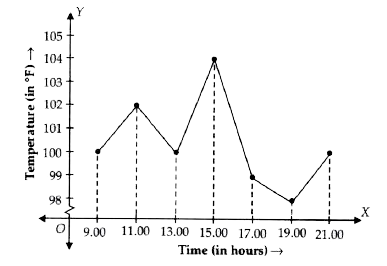Observe the graph of potential difference (V) drawn between two ens of a conductor and current (I) passing through it. Answer the following questions :
Which law is used to explain the graph ? State it.

Text Solution
Ohm's law is used to explain the given graph.
Ohm's Law : The potential difference between the ends of a conductor is directly proportional to the electric current passing through it at constant temperature.
⇒V∝1⇒VI=Constant
|
Topper's Solved these Questions
- ELECTRIC CURRENTBook:VGS PUBLICATION-BRILLIANTChapter:ELECTRIC CURRENTExercise:EXPERIMENTATION AND FIELD INVESTIGATION
Explore 3 Videos
- ELECTRIC CURRENTBook:VGS PUBLICATION-BRILLIANTChapter:ELECTRIC CURRENTExercise:INFORMATION SKILLS AND PROJECTS
Explore 19 Videos
- ELECTRIC CURRENTBook:VGS PUBLICATION-BRILLIANTChapter:ELECTRIC CURRENTExercise:APPRECIATION AND AESTHETIC SENSE, VALUES
Explore 5 Videos
- CHEMICAL REACTIONS AND EQUATIONSBook:VGS PUBLICATION-BRILLIANTChapter:CHEMICAL REACTIONS AND EQUATIONSExercise:ESSENTIAL MATERIAL FOR EXAMINATION PURPOSE
Explore 1 Video
- ELECTROMAGNETISMBook:VGS PUBLICATION-BRILLIANTChapter:ELECTROMAGNETISMExercise:CREATIVE QUESTION FOR NEW MODEL EXAMINATION (SEC-4)
Explore 30 Videos
Similar Questions
Knowledge Check
If V is the potential difference between the ends of conductor and l is the current through it, then ohm's law states that
AV∝lBV∝1lCV∝l2DV∝l0Which law states the relationship between the potential difference across a conductor and the current flowing through it ?
ANewton's lawBFaraday's lawCOhm's lawDJoules lawA graph is plotted between the potential difference (applied across the ends of a conductor) and the current (following through the conductor). The graph is a straight line
Ahaving intercepts on both axesBhaving an intercept on the X-axisChaving in intercept on the Y-axisDnone of these
Draw a graph of Potential difference (V) versus Current (I) for an ohmic resistor.
View SolutionObserve the graph and answer the following questions.
The information given by the graph is:

View SolutionName and state the law which relates the potential difference and current in a conductor.
View SolutionObserve the graph and answer the following questions.
The temperature is maximum at

View SolutionObserve the graph and answer the following questions.
The temperature is minimum at

View Solution
